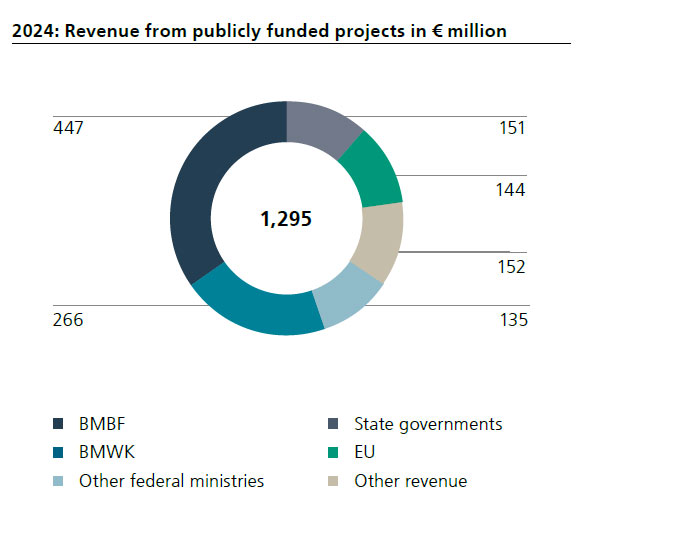Performance-related funding
The consistent market orientation of Fraunhofer’s research contributes decisively to its impact. This is rooted in its mission, is embodied in the Fraunhofer model, and is key to the ongoing success of Fraunhofer's innovations on the market. The Fraunhofer model is unique in the highly specialized German science landscape: No more than one-third of Fraunhofer's budget comes from institutional funding (base funding from the German federal and state governments) while at least two thirds of its funding stems from competitive private- and public-sector contracts. The aim is to strike a balance between private- and public-sector revenue. The resulting pressure to acquire contracts — compared to organizations whose budget largely stems from institutional funding — fosters entrepreneurial thinking and activities. This ensures that the Fraunhofer-Gesellschaft continuously develops solutions for the economic and social needs of today and tomorrow.
Fraunhofer’s financing is thus based on three pillars: base funding, funding from industry contracts and competitively acquired public-sector project funding. As a non-profit organization, we do not pursue financial gain. Any surpluses are used to promote research in line with our statutes. The base funding that Fraunhofer receives as institutional funding from the German federal and state governments is used in accordance with our mission for pre-competitive research for the benefit of industry and society.
The Fraunhofer-Gesellschaft operates numerous institutes and research units in Germany. Around 70 percent of Fraunhofer’s contract research revenue is derived from industry contracts and publicly financed research projects. The remaining 30 percent come from the German federal and state governments in the form of base funding. This enables the institutes to work on solutions that will become relevant for industry and society within the next five to ten years.






